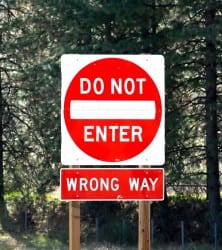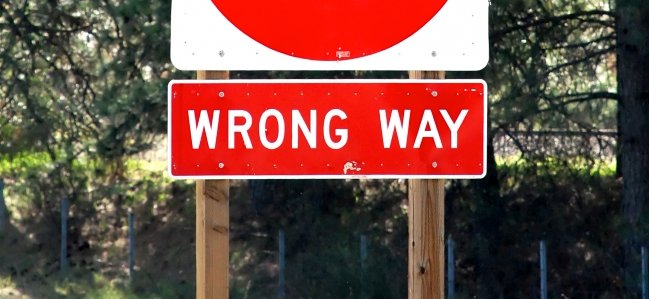5 Copyright Terms We Need to Stop Using Incorrectly
 Copyright is playing a bigger and more important role in the lives of everyday people. Where, thirty years ago, copyright only really impacted those in mass media, now every social media user, media consumer or Internet user needs to be at least somewhat aware of copyright and the roles it plays.
Copyright is playing a bigger and more important role in the lives of everyday people. Where, thirty years ago, copyright only really impacted those in mass media, now every social media user, media consumer or Internet user needs to be at least somewhat aware of copyright and the roles it plays.
Unfortunately though, the dialog about copyright has not kept up with its rising importance and a slew of terms and phrases are used casually in ways that simply wrong.
Now is the time to correct those mistakes and to try and help those less familiar with copyright terminology understand what these terms actually mean and how to better convey what they are actually talking about.
To be clear, this isn’t about copyright terms that are controversial such as theft, piracy and sharing, which are often the subject o heated debates even though they really aren’t technical terms when it comes to copyright.
These are clearly-defined terms that are used in a way that is materially incorrect.
1. Public Domain
What it Means: A work that is in the public domain means that it is not copyright protected. This could be because the copyright expired, as with very old works, that it was a work created by the U.S. government or that it lost copyright protection through one means or another.
How it is Used: However, many have used the term to say that a work is available on the Internet, in bookstores or otherwise available to the public. The confusion is understandable, but most works that are available to the public are very much under copyright.
What to Use Instead: Either use “Available to the public” or “Publicly available” as that is more along the lines of what is intended.
2. Copyright Free
What it Means: Similar to public domain, copyright-free simply means that the work is free of copyright restrictions and, essentially, is in the public domain.
How it is Used: However, many use it to mean that a work is available for some kind of reuse. This includes royalty-free stock photos, content placed under Creative Commons Licenses and other content that’s available for limited reuse. Unfortunately, most of those works are just licensed for use, not actually copyright-free.
What to Use Instead: Either “Available to use”, “Cleared for use”, “Licensed for use” or “Royalty free” depending on the nature of the work and it’s license.
3. Fair Use
What it Means: A fair use of a work is an infringement of a work where the court has determined that the infringer is not liable due to the nature of the infringement being within the bounds of the law.
How it is Used: Unfortunately, fair use is often used to describe any use of a copyrighted work that is noncommercial, attributed or otherwise seen as ethically acceptable. However, fair use is a defense to a copyright infringement lawsuit and can only be determined in a court and it is based upon four factors that must be weighed by a judge and/or jury.
What to Use Instead: Probably nothing. If your use is a fair use, saying so doesn’t bolster your case. Likewise, if it isn’t a fair use, saying that it is doesn’t make you any less liable. If you are trying to say a use is “attributed” or “noncommercial” you can say that, but no one outside of a judge or jury can make a determination that a use fair or not, they can only hazard a guess.
4. Open Source
What it Means: Open source simply means that the work is licensed under an open source license. Though most open source licensed works are software applications, other types of works can and are licensed as well (notably help documents). These licenses provide a great deal of flexibility and freedom to users including, the right to edit the work, copy it or distribute it with certain restrictions.
How it is Used: However, some have taken to calling any freely available application “open source” even if it is merely a free piece of software. Many applications that can be legally downloaded for free are not open source. Likewise, not all open source applications are free of charge, with many costing money to obtain.
What to Use Instead: “Freeware” or “Free to download” software is generally much more acceptable in cases where you are dealing with free applications that are not licensed under an open source license.
5. Copyright
What it Means: Copyright is a set of rights that a creator (or their employer) has in a creative work of authorship that is fixed into a tangible medium of expression. This includes books, music, software, artwork, music, movies and more.
How it is Used: However, it is often used as a substitute for other types of intellectual property or even intellectual property in general. This includes everything from trademarks, such as names and slogans, to ideas or anything else that seems remotely copyright-like.
What to Use Instead: If you don’t know what type of intellectual property it is at issue, just say “intellectual property”. Otherwise, you can use trademark, patent, trade secret, etc. to identify the actual type of property at issue.
Bottom Line
What we need is better dialog about copyright among all parties who have a stake in it. This includes content creators, consumers, intermediaries and more. However, that dialog can’t take place if we can’t agree on basic definitions of key words.
It’s important for everyone involved to not just understand how copyright works, what it is and what the law says, but also how to convey their thoughts and feelings. What we need isn’t an angry or motivated populace, but an informed one that can make their own decision and express their own viewpoints effectively.
Without that, the entirety of the copyright debate is prone to hyperbole, miscommunication and exaggeration, three things that help no one.
If the copyright climate on the Web is going to improve, we need better quality discussion, not just more of it.
Want to Reuse or Republish this Content?
If you want to feature this article in your site, classroom or elsewhere, just let us know! We usually grant permission within 24 hours.
